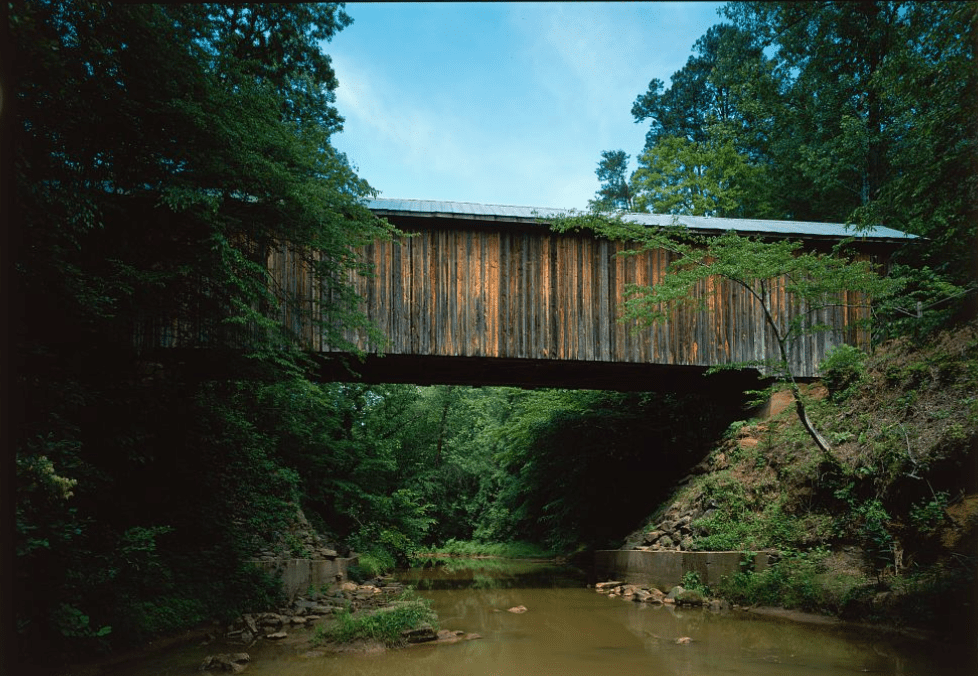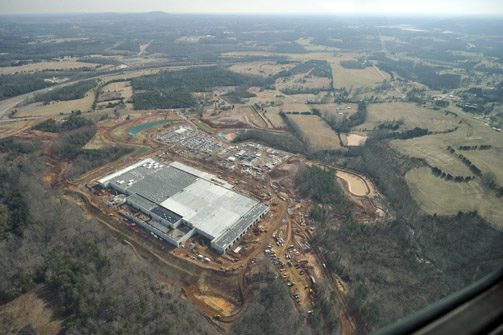Catawba County: An Introduction

Introduction: Catawba County stands out among all the counties in the Charlotte region as the one whose economic progress over the years, while related to Charlotte’s, has had enough independent threads to establish it and several neighboring counties as a separate Metropolitan Statistical Area (MSA), as defined by the US Office of Management and Budget. Centered on Hickory, this MSA has maintained a cohesive economic and cultural identity that extends further into the Blue Ridge foothills than the Charlotte region is typically credited for reaching. However, with the continued expansion of residential growth around Lake Norman in the southeastern part of the county, and the widening of US Highway 321 into a four-lane, limited access highway, Catawba’s economic ties to the Charlotte region have strengthened in recent years. As the county’s traditional economies of textiles and furniture are joined by new technology-driven sectors, best represented by North Carolina’s emerging Data Center Corridor stretching from Catawba up through Caldwell County, the relationship of this historically independent region of North Carolina to the Charlotte metropolitan area will likely grow stronger as its new economic players place a premium on having access to Charlotte’s international airport, financial resources, and cultural amenities.
Historical Overview: An excerpt from A Guide to the Historic Architecture of Piedmont North Carolina (UNC Press), Catherine Bishir and Michael T. Southern. (p. 454)
“Lying in the great southward curve of the Catawba River and named for the native people of the region, the county was formed from Lincoln in 1842. In the mid-18th c., Scotch-Irish and English farmers settled near the river, and Germans took up lands along the South Fork Catawba, as evidenced by the many Lutheran and Reformed churches. Methodism also took hold early; the state’s first congregations of that faith formed at Terrell by 1791 and had the first of several camp meeting grounds in 1794. Early 19th- c. inhabitants raised grains and other crops traded downriver to South Carolina, and many build substantial houses. The Western North Carolina Railroad (WNCRR) which arrived in 1860, kindled new towns and industries after the Civil War. Hickory arose as a regional center for woodworking and wagonmaking, then furniture and textiles.”
Catawba Today: Ever since the site of an old crossroads tavern (known as Hickory Tavern) capitalized on the arrival of the railroad to transform itself into a major depot for the transfer of mountain-area produce from wagon to rail, Catawba County has been known as a major center of commerce for the foothills of the Blue Ridge mountains. Taking advantage of its central location, where a number of transportation networks from the urbanizing Piedmont converged to link up with more remote mountain communities, Catawba County has had a long and successful track record of transforming its favorable geography into economic advantage. This is probably best represented by the emergence of Hickory as a major furniture center, which was influenced both by its proximity to the great forests of western North Carolina and the development of a prominent woodworking industry with close ties to the wagon making and repair businesses that sprang up around the Hickory depot to service the many wagons that gathered there for commerce.

In the late 19th and early 20th centuries, the Catawba River made the county ripe for industrialization, as textiles joined furniture in strengthening the county’s regional economic prominence. In the latter part of the 20th century, the fiber optics industry set up shop and established the county as one of the world’s top producers of fiber optic cable, so important to the telecommunications industry. And with Apple’s decision to locate a new data center near the Town of Maiden, following an earlier decision by Google to locate a similar facility in neighboring Caldwell County, Catawba is now at the heart of an emerging data center corridor stretching from Charlotte northwest to the edge of the Blue Ridge Mountains.
If there has been a secret to Catawba County’s economic resilience over the years, it has been its mastery of transferring talent and infrastructure developed during one economic era into the development of an emerging industry at the vanguard of a new era. A 19th century woodworking industry that developed during the age of wagon transport contributed greatly to the county’s emergence as a major center of furniture manufacturing in the 20th century. An abundance of water and power that fueled the county’s textile industry set the stage for the development of a successful fiber optics industry at the dawn of the 21st century. In turn, the county’s extensive network of fiber optic cables, along with affordable water and power, made the area attractive to technology giants Apple and Google as potential locations for the data centers that keep their global operations running. This sort of adaptive economic development is what has allowed Catawba County and the surrounding area to become a regional economic center in its own right, and not just a satellite economy of nearby metropolitan areas.
In addition to garnering its own MSA designation, the greater Hickory area has spawned other regional entities that operate independent of similar organizations in nearby Charlotte. The Western Piedmont Council of Governments, based in Hickory, serves several counties in the greater Catawba Valley area, and while it maintains close ties to the Centralina Council of Governments in Charlotte, it has been careful to maintain a separate identity and geographic focus. Similarly, Lenoir-Rhyne University has become an important academic and cultural center not only for Catawba County, but the entire Catawba Valley region.
As the influence of Catawba County’s traditional industries has waned, however, so has its reputation for self-reliance. The effort to attract Apple was a collaborative effort that not only involved the State of North Carolina, but also the Charlotte-based Charlotte Regional Partnership and Duke Energy. Recognizing the importance of higher education to the county’s and region’s future, and the fact that the Hickory area is the state’s only MSA not served by a branch campus of the University of North Carolina system, local leaders recently teamed with Appalachian State University in Boone to create the Appalachian State University Greater Hickory Partnership, bringing together Appalachian State, Lenoir-Rhyne and Catawba Valley Community College to broaden the higher education and worker training options available to the region’s citizens.
For years, Catawba County and the Charlotte region have shared a major river system in the Catawba River, and a common textile heritage. Beyond that, however, the county has seemed rather content to maintain an independent identity relative to its larger cousin to the south. Yet, Catawba has always been a pragmatic county, particularly as it relates to capitalizing on its geographic advantages. As the county’s economic destiny increasingly converges with that of the Charlotte region’s in the 21st century – in what many believe will be an increasingly global era favoring well-integrated economic regions – it seems more than likely that Catawba will find even more reasons to engage collaboratively with a globally-connected Charlotte. — Jeff Michael
Photos by Nancy Pierce.
Catawba County Articles & Publications







